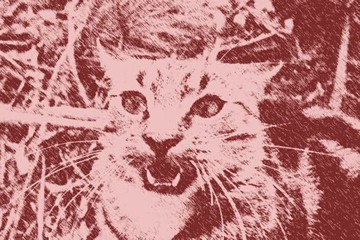Environmental organisations have written to Ministers and the Threatened Species Commissioner, seeking intervention on the imminent extinction of the galaxias species.
An Australian fish is on the brink of extinction. It may already be too late. The last survey of the critically endangered Yalmy galaxias more than a year ago (in March 2023) found just 20 survivors.
The Yalmy galaxias is a member of what probably counts as Australia’s most threatened group of animals. The situation of at least 2 other galaxiids – the West Gippsland galaxias and Hunter River galaxias – is almost as dire as that of the Yalmy, and another dozen species have been assessed as having at least a 50% probability of extinction by 2040.
Several could be rendered extinct by the simple act of a recreational fisher transferring trout to their last refuges. Extinctions are inevitable unless action is taken to secure trout-free havens for galaxiids.
To keep Australia’s pledge for no new extinctions, we ask that your governments urgently commit funding to the following (as is relevant for each state):
- conduct a rescue operation for the Yalmy galaxias (Victoria), including surveys for survivors and potential release sites, and captive breeding (if feasible)
- find or create trout-free havens and/or undertake captive breeding for other galaxias species at high risk of imminent extinction (Victoria, NSW),
- rapidly develop a national Invasive Fish Action Plan, with the appointment of a coordinator to focus initial action on protecting threatened galaxias species from invasive trout.
The Yalmy galaxias
This newly discovered species probably used to occur throughout much of the Snowy River system. Now, it is known from just one tiny population in connected tributaries of the lower Snowy River in East Gippsland, after having been eliminated elsewhere by predatory brown trout, which occur just upstream and downstream of the Yalmy refuge.
The Yalmy has also been hit by a succession of extreme events – the Millennium drought, the Orbost fires in 2014, and the 2019–20 Black Summer bushfires. The sediment resulting from these fires would have suffocated the galaxias and blanketed their specialised cobble habitat.
The federal funding following the Black Summer fires permitted a rescue attempt, which resulted in the capture of six injured juveniles that didn’t survive and one adult released back to the capture site. Subsequent twice-yearly surveys did not find any surviving Yalmy galaxias until the last funded survey in March 2023, which found just 20. This is likely too few, encompassing too little genetic diversity, to sustain a captive breeding program. Since federal funding lapsed, there have been no more surveys.
To determine whether there are sufficient numbers of surviving galaxias for captive breeding will require surveys of all potential habitat (which is remote and difficult to access) and, if survivors are found, an assessment of the potential for captive breeding.
Saving galaxiids from trout
Most galaxias species cannot coexist with brown trout or rainbow trout. The Yalmy galaxias was one of 15 galaxiids assessed under the National Environmental Science Program as having a >50% probability of extinction by 2040 under status quo trout management. This assessment was conducted prior to the 2019-20 fires, which significantly increased the extinction risks for several species. Currently, 14 galaxias species are listed under the EPBC Act as critically endangered and 6 as endangered.
In addition to the Yalmy galaxias, the 14 species assessed as likely to go extinct (in order of assessed risk) are the shaw galaxias (G. gunaikurnai), West Gippsland galaxias (G. longifundus), tapered galaxias (G. lanceolatus), Dargo galaxias (G. mungadhan), Morwell galaxias (G. sp. nov. ‘Morwell’), McDowall’s galaxias (G. mcdowalli), stocky galaxias (G. tantangara), Kosciuszko galaxias (G. supremus), East Gippsland galaxias (G. aequipinnis), Hunter galaxias (G. sp. nov. ‘Hunter’), Moroka galaxias (G. sp. nov. ‘Moroka’), swan galaxias (G. fontanus) and short-tail galaxias (G. brevissimus).
The West Gippsland galaxias (Victoria) and the Hunter River galaxias (New South Wales) are probably the next most-atrisk species, both in need of trout-free havens and possibly also captive breeding.
Because they all share a primary threat of predation by invasive trout, and this is the main threat amenable to conservation action, we recommend the development of an action plan – following the model of the action plans for feral pigs, feral deer, cats and foxes, and wild dogs, with coordinators to help drive implementation.
Invasive fish, including trout, should also be listed as a threatening process under the EPBC Act. However, such is the inefficiency of the current threat abatement listing and planning process that extinctions are likely to occur by the time a listing and plan could be achieved – highlighting the need for reforms of the threat abatement system, including systematic listing of threats.
In conclusion
Immediate action to save the Yalmy galaxias and short-term action to protect other at-risk galaxias species are essential if Australia is to meet the zero extinctions pledge. Keeping this pledge requires a committed, collaborative national effort to abate the threat of invasive trout.
For further information:









